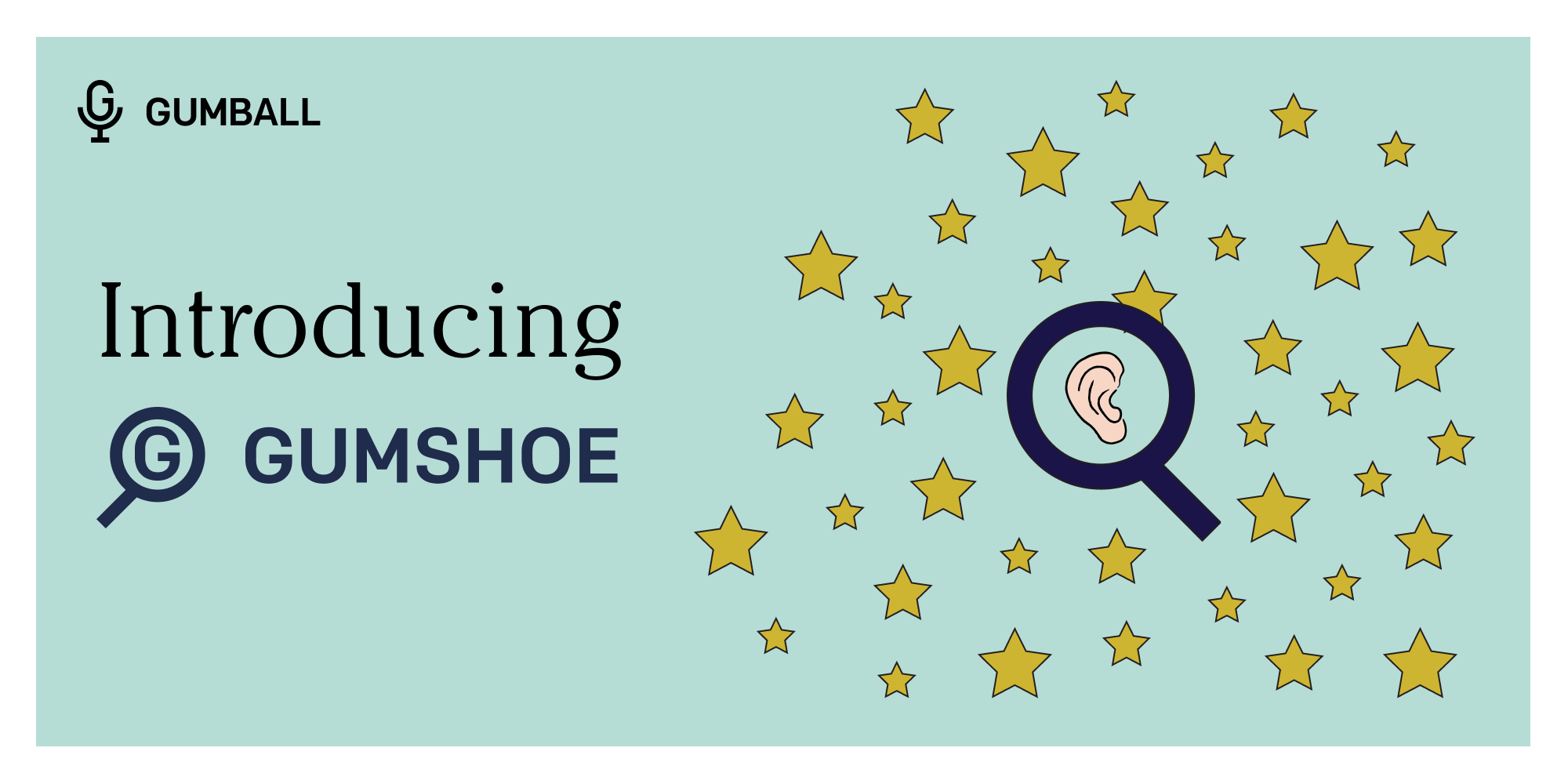Gumshoe is Here! How Does it Work, and Why Does it Matter?
We recently announced the launch of Gumshoe. Learn how it works and how podcasters can implement it on their show to get more transparency into campaign delivery.

Gumshoe is here. Earlier this week, we announced the launch of Gumshoe, a tracking tool within the Gumball platform that provides useful, transparent insights into ad impression delivery. Here, we’ll be explaining further what Gumshoe is, how it works, and why it’s important.
What is Gumshoe?
Gumshoe is a measurement tool that’s attached to a podcast’s RSS feed (in the case of an embedded ad) or an ad campaign within a DAI hosting platform (in the case of a dynamic ad) to provide free and independent insights into the podcast’s download analytics. Gumshoe works with most hosting platforms and with both embedded and dynamic ads.
What exactly does Gumshoe do?
To answer this, it helps to first step back and look at what happens when a podcast episode drops. To start, a podcast audio file is uploaded to a hosting platform like Omny or Art19. The episode is added to the show’s RSS feed, where the listener’s device sends a “request” to play the audio file of the episode.
Gumshoe works by watching for requests to the audio file. If someone requests an episode with the Gumshoe prefix or tracking pixel, then Gumball receives their IP address, turns it into an anonymous key, and feeds it into a processing system, which counts plays by episode using IAB guidelines. It keeps track of each ad’s performance and displays the qualified listens as a progress bar that makes it clear to the Gumball user how many impressions their campaign has reached.

What makes Gumshoe different?
Many podcast analytics services offer prefixes. What’s cool about Gumshoe is that it’s free and directly part of Gumball, meaning that Gumball users no longer need to rely on these external analytics services in order to qualify their listens to advertisers on Gumball, nor do they need to pay extra money for it (Some prefix services, for example, start at a couple hundred dollars a month for its reporting features).
Previously, podcasters on Gumball had to take screenshots from these services and email them to the Gumball support team in order to verify campaign delivery information. Now, all that data is made available to creators, advertisers, and the Gumball team in real time, cutting down on time and manual labor.
Why does it matter that Gumshoe is here?
Gumshoe strengthens the trust and relationships between advertisers and creators. By making it easy to directly access ad impression figures, advertisers can quickly evaluate campaign performance across multiple campaigns.
Meanwhile, Gumshoe provides an explicit way for podcasters to demonstrate their value and work with a growing number of advertisers who want an independent source of truth around campaign delivery and status.
What about listener privacy? Can Gumshoe also track listener activity?
Listener privacy is of utmost importance at Gumball, and Gumshoe treats podcast download information with care. Gumshoe doesn’t use cookies to follow listeners and doesn’t have any information about individual listeners beyond their IP address. Only aggregated counts of qualified listens are shown to advertisers.
Additionally, these IP addresses are hashed (coded into an unrecognizable jumble of numbers and letters), and deleted after a year. Listeners who don’t want their data to be part of Gumshoe will be able to request that it be deleted.
I’m a podcaster. How do I implement Gumshoe?
Gumshoe’s prefix URL is: https://2.gum.fm/
To learn how to add Gumshoe to the RSS feed of the hosting platform you use, visit this Help Center article.
And now you know all about Gumshoe! Up next, we’ll be sharing some insights into the process of building Gumshoe directly from our engineering team.
For any assistance or questions regarding Gumshoe, please reach out to help@gumball.fm.
